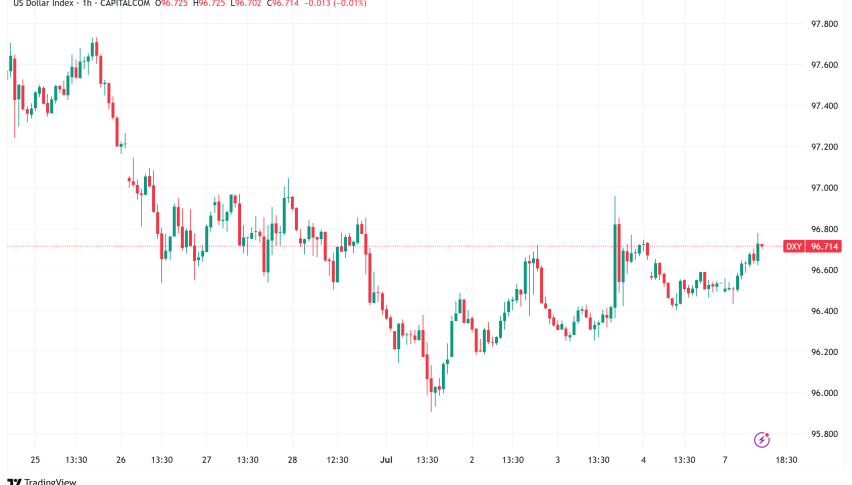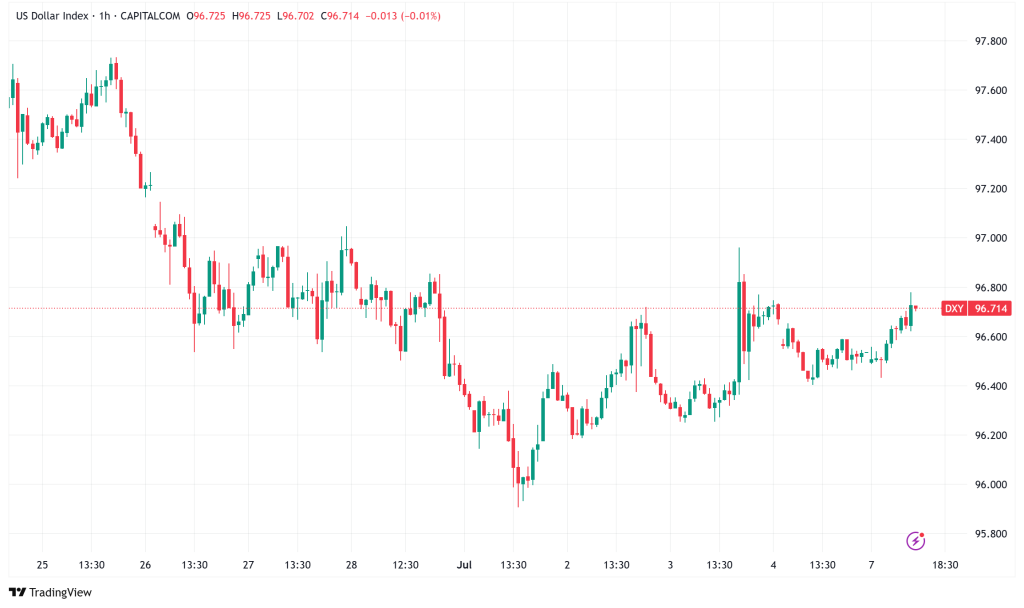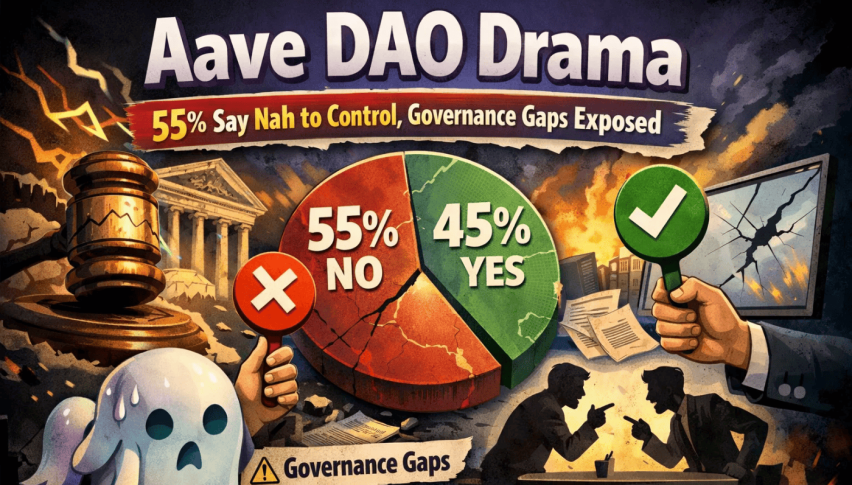US Dollar Index DXY Stabilizes Near Multi-Year Lows as Trump Tariff Deadline Approaches
On Monday, the US Dollar Index (DXY) traded around 96.70, which is close to its lowest level in years. This was because markets were getting

Quick overview
- The US Dollar Index (DXY) is trading near multi-year lows at around 96.70 due to impending tariffs set to take effect on August 1.
- The dollar has weakened significantly against the euro and Swiss franc, with uncertainty surrounding Trump's tariffs contributing to market volatility.
- Despite stronger-than-expected job growth in June, rising budgetary concerns and expectations of further rate cuts from the Federal Reserve are pressuring the dollar.
- Analysts predict continued volatility in the forex market as traders await details on tariff announcements and progress in trade negotiations.
On Monday, the US Dollar Index (DXY) traded around 96.70, which is close to its lowest level in years. This was because markets were getting ready for President Donald Trump’s big tariffs to go into force on August 1.

The dollar has been under a lot of pressure lately. It fell to its lowest level against the euro since 2021 and its weakest level against the Swiss franc since 2015. The DXY, which compares the dollar to six major currencies, hit a low of 96.373 last Tuesday, which was the lowest level in almost three and a half years. It has since bounced back a little.
Trump’s Tariff Uncertainty Weighs on Markets
The dollar has been weak lately because many are unsure about Trump’s “Liberation Day” tariffs. The 90-day pause on these charges ends on Wednesday, and starting August 1, most US trading partners will have to pay significantly higher tariffs.
On Sunday, Treasury Secretary Scott Bessent made it clear that the new tariffs would go back to what they were on April 2 for countries that haven’t reached trade agreements with Washington. This gives trading partners more time to renegotiate terms. The White House has only made deals with China, the UK, and Vietnam so far.
Howard Lutnick, the Secretary of Commerce, confirmed that the tariffs will go into effect on August 1. He also said that Trump is finalizing the particular prices and may send out 12 to 15 tariff letters on Monday. The government hopes to finish trade deals or letters with most countries by July 9.
Trump warned on social media that countries that support the “anti-American policies of BRICS” would suffer an extra 10% tariff. He said there would be “no exceptions to this policy.”
Mixed Economic Signals From the US
After Trump signed his “Big Beautiful Bill” into law on Friday, which included a huge package of tax cuts and spending cutbacks, the dollar faced even more headwinds because of rising budgetary concerns. The currency has also been under pressure because people expect the Federal Reserve to decrease rates even further.
But the stronger-than-expected job numbers helped a little. In June, the US economy added 147,000 jobs, which is more than the 110,000 jobs that were expected and more than the 144,000 jobs that were added in May. This easing of fears of a recession took some of the immediate impetus off the Fed to lower rates even more.
Currency Cross-Rates Show Volatility
The dollar’s performance against other major currencies showed that things were still up in the air. The euro EUR/USD fell 0.2% to $1.1767, which is still near to its July 1 record of $1.1829, which was the highest level since September 2021. Sterling fell 0.3% to $1.3615, but it was still close to its July 1 high of $1.3787, which was the highest level since October 2021.
The Swiss currency stayed strong, as the dollar fell to 0.7949 francs, getting closer to the July 1 low of 0.7869, which hasn’t been seen since January 2015.
Commodity Currencies Under Pressure
Risk-sensitive currencies took the most hit from tariff worries. The Australian dollar AUD/USD fell 0.8% to $0.6502, down from its nearly-eight-month high of $0.6590 on July 1. The Reserve Bank of Australia is expected to drop its cash rate by another quarter point on Tuesday since inflation is slowing down and GDP is uncertain.
The New Zealand dollar NZD/USD also fell 0.7% to $0.6010, which is what it was worth before the Reserve Bank of New Zealand made its policy decision on Wednesday. Most analysts think rates will stay the same, although they do forecast one more quarter-point drop later this year.
Forex Market Outlook
Even though the market picked up a little on Monday, analysts say it will still be volatile. James Kniveton, a senior corporate FX dealer at Convera, said, “Market volatility seems unavoidable when the pause officially ends and new tariff levels are announced.” He did say, though, that the effect “may be less strong this time” because the ideas that are now on the table are mostly expected and the markets seem to be pricing in additional deadline extensions.
The dollar’s value in the next few days will probably depend on the details of Trump’s tariff announcements and any progress made in trade talks. As the August 1 deadline gets closer, traders are still on edge in the currency markets as they prepare for possible policy changes that could have a big effect on global commerce and currency values.
- Check out our free forex signals
- Follow the top economic events on FX Leaders economic calendar
- Trade better, discover more Forex Trading Strategies
- Open a FREE Trading Account


